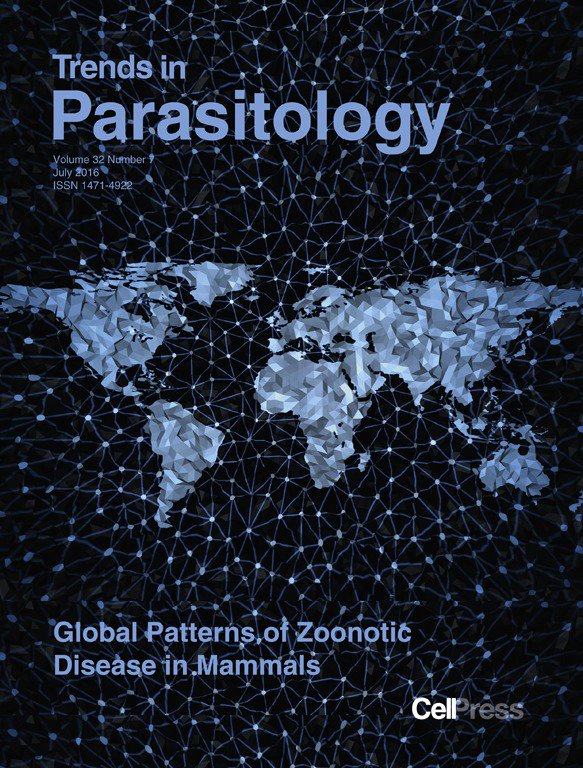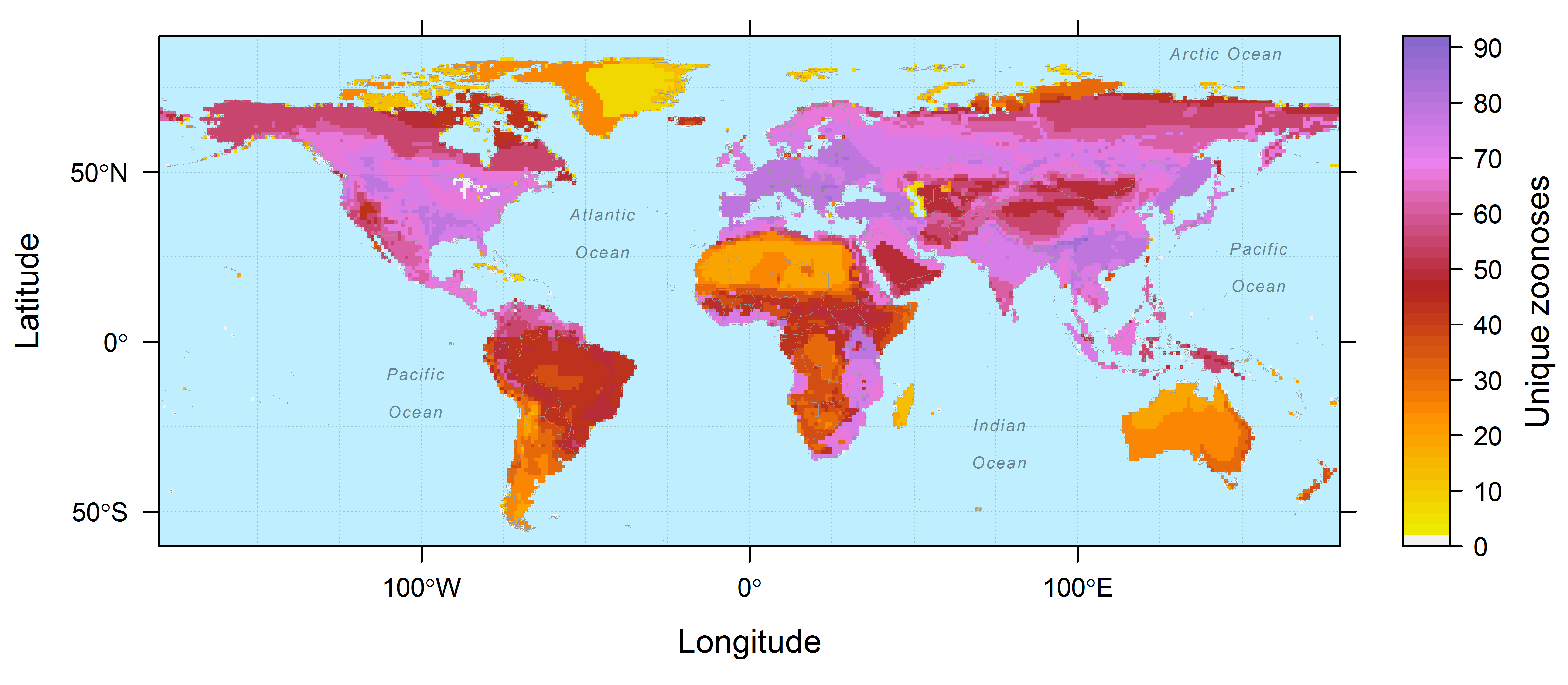
Global patterns of zoonotic disease in mammals
 The majority of infectious diseases currently emerging in humans originated in mammals. Yet we still know very little about the global patterns of mammal-to-human pathogen transmission. As a first step, researchers at the Cary Institute of Ecosystem Studies and the University of Georgia have assembled world maps of what’s on record about mammal-to-human diseases. The work, which aims to question whether it is possible to predict the emergence of new zoonotic diseases, was published in the June issue of Trends in Parasitology.
The majority of infectious diseases currently emerging in humans originated in mammals. Yet we still know very little about the global patterns of mammal-to-human pathogen transmission. As a first step, researchers at the Cary Institute of Ecosystem Studies and the University of Georgia have assembled world maps of what’s on record about mammal-to-human diseases. The work, which aims to question whether it is possible to predict the emergence of new zoonotic diseases, was published in the June issue of Trends in Parasitology.
The maps include data on all 27 orders of terrestrial mammals, including rabid bats, camels carrying Middle East respiratory syndrome, the hoofed relatives of livestock that pass on food-borne diseases, and many different kinds (more than 2,000 species) of rodents. Outbreaks of diseases caused by pathogens that originate in non-human hosts (called zoonoses) are believed to be inherently unpredictable, but the maps reveal understudied patterns.
Some key findings include:
- More than 10% of rodent species (244/2,220) are zoonotic hosts, carrying 85 unique zoonotic diseases
- Although there are few species of primates overall, a greater proportion of primates (77/365, 21%) are zoonotic hosts
- Despite their species richness and bad reputation as prominent zoonotic reservoirs, bats carry far fewer zoonoses (25) than rodents (85), primates (61), carnivores (83) and hooved mammals (59)
- Europe and Russia are global hotspots for rodent hosts, while Central and South America are global hotspots for bat hosts; primate host richness is greatest in equatorial Africa
- Mammals carry more bacteria than any other pathogen type, followed by viruses

Han, B.A., A.M. Kramer, & J.M. Drake. 2016. Global patterns of zoonotic disease in mammals. Trends in Parasitology 32:565-577. [online]
(Also available by email.)





